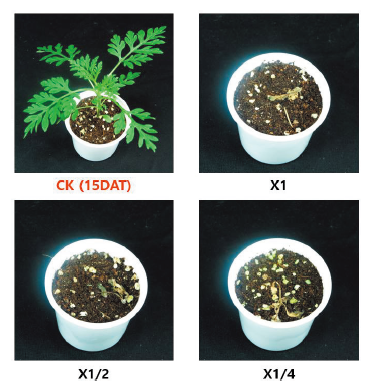Abstract
Figures & Tables

Fig. 1. Herbicidal activity of foliar application of KRA16-334 culture broth filtrate to with early leaf stage (2-3Ls) in a greenhouse condition. Herbicidal activity was determined by visual injury (0: No injury, 100: Complete death). The representative pictures were taken 15 days after foliar application. DAT: Days after treatment.


